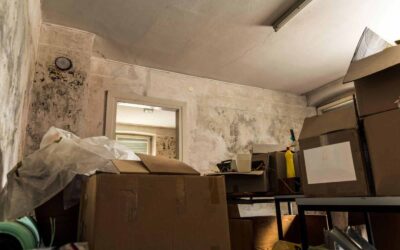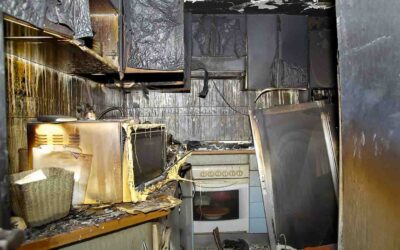One of the key challenges in any major cleaning or restoration project is finding the best way to perform the job. Many of the traditional methods of cleaning can be just as destructive as the damage or wear and tear itself, not only to the surface being cleaned but to the surrounding environment. Modern cleaners, particularly those with an eye toward ecologically friendly techniques, are constantly seeking new solutions to this problem.
One of the most important innovations we’ve begun to employ at Biodynamic is dry ice blasting. This cutting-edge new process eliminates the need for harsh solvents while rendering surfaces clean and free of contaminants far more effectively and efficiently than other methods. Its ability to remove unwanted materials from a medium without the use of water and without leaving any harmful residue behind makes it far safer than many traditional methods, while it is also gentle enough to be used on even the most delicate equipment. Below, we’ll discuss the details of this revolutionary cleaning technique and help you determine whether it’s the right one to employ for your particular needs.
What Is Dry Ice?
The substance we refer to as “dry ice” is actually just the solid state of carbon dioxide (CO2). It’s “dry” because although it’s solid just like ordinary ice, it doesn’t melt into a liquid state once the temperature rises above its freezing point. Instead, it undergoes a process known as sublimation, which means that it transforms directly from a solid into a gas, skipping the liquid phase entirely. Dry ice must be kept extremely cold to remain solid. It will begin to sublimate if the ambient temperature is any warmer than -109.2 °F.
How Can It Be Used for Cleaning?
Since dry ice is composed of only CO2 and nothing else, it weighs very little, and it does not react with other substances. These properties, combined with its extremely low temperature, are what make it so effective when used to clean surfaces.
To perform dry ice blasting, small pellets of the material are loaded into a specialized piece of equipment (usually just called a “dry ice blaster”). The dry ice blaster is connected to a very large, very powerful compressor, which it uses to fire the pellets at extremely high speeds toward the surface that is to be cleaned.
Due to the speed, and the sudden change in temperature that the dry ice undergoes, it rapidly sublimates into its gaseous form. This creates a thermal shock effect: the sudden temperature change weakens the material that is being removed. The expansion of the CO2 that occurs during sublimation also causes the material to be broken up and carried away. It has similar cleaning power to a pressure washer, except that no byproducts are left behind.
What Are the Benefits of Dry Ice Blasting?
There are several reasons why dry ice blasting is such an effective and efficient method for cleaning surfaces. First, dry ice is extremely smooth and lightweight, making it far gentler on surfaces than water, sand, or other materials used in pressure washing. The fact that the dry ice pellets sublimate almost instantaneously adds to this effect.
Since no cleaning products (other than CO2) are employed in dry ice blasting, it’s also vastly more efficient, as there is no residue or other byproducts to clean up afterward, and there is no risk of introducing chemicals to the environment. This means that jobs that utilize dry ice blasting can often be performed much faster than ones that do not and are safer for the environment.
There is another key benefit of using such a cold substance to clean a surface: the fact that almost no microorganisms can survive the extremely low temperature of solid dry ice. This makes it excellent for both cleaning a surface and disinfecting it entirely, killing bacteria and viruses and rendering the area almost entirely sterile. For this reason, it’s approved for use in restaurants and food production facilities by the FDA and USDA.
There Are Environmental Benefits, Too
As we’ve mentioned, dry ice is also nonreactive and entirely nontoxic, being composed entirely of a gas that is already present in the atmosphere in large concentrations. It won’t harm the environment or leave dangerous chemicals behind in areas where it has been used.
It’s also important to note that the CO2 that is used for dry ice blasting already exists. It does not contribute to climate change the way that machinery that generates new CO2 does (usually through the burning of fuel).
Its impressive environmental benefits mean that dry ice blasting has been approved for use by the Environmental Protection Agency (EPA).
Where Is Dry Ice Blasting Used?
One of the first uses for dry ice blasting was in the aviation industry, where early employers of the technique used it for cleaning aircraft without damaging them. It is still widely used for this purpose, as well as for cleaning similar equipment, including automobiles and boat hulls. It’s also used for cleaning delicate industrial equipment, such as electronics and computer parts, as it is able to avoid damaging even their extremely delicate electrical components.
Since dry ice is not flammable and will not contribute to the risk of fire, it can be used on equipment that utilizes high temperatures or is electrified, such as HVAC systems. It is also frequently employed in restaurants for the same reason, as well as for its ability to disinfect surfaces. And since it is non-conductive, we can typically perform the process with the equipment on warm. This greatly reduces downtime, where you would otherwise have to shut down/cool down the equipment that needs to be cleaned.
Its ability to clean objects without harming them means that dry ice blasting has even been used for historical restoration projects, removing caked-on layers of material from extremely old artifacts and buildings.
Dry Ice Blasting for Your Project
If you have an area that needs to be cleaned, particularly one with sensitive, delicate, or potentially dangerous equipment, then dry ice blasting may be the perfect method for the job. If you are interested in learning more about this process and how it can be used to safely and effectively perform much-needed cleanup for your business or organization, contact Biodynamic. Our experts will be happy to discuss the possibilities of this revolutionary cleaning technique for any needs you may have.


